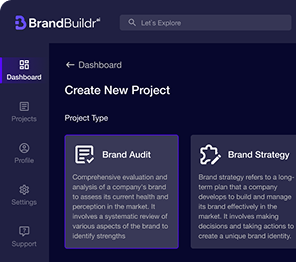Ride-sharing platforms have revolutionized the transportation industry, providing a convenient, cost-effective, and environmentally friendly alternative to traditional taxi services. The success of companies like Uber and Lyft has inspired many entrepreneurs to explore the creation of their own ride-sharing platforms. However, building such a platform requires careful planning, a deep understanding of technology, and a strategic approach to overcoming the challenges inherent in this highly competitive market.
In this comprehensive guide, we’ll walk you through the essential steps involved in creating a ride-sharing platform, from concept to launch.
%20(1)%20(1).avif)
1. Understanding the Ride-Sharing Market
Before diving into the technical aspects of building a ride-sharing platform, it’s crucial to understand the market landscape:
1.1 Market Research and Analysis
Conduct thorough market research to identify your target audience, understand their needs, and analyze the competition. Consider factors such as:
- Demographics: Who are your potential users? What are their preferences and pain points?
- Geography: Which cities or regions will you serve? Consider factors like population density, public transportation availability, and local regulations.
- Competitors: Who are your main competitors? What are their strengths and weaknesses? How can you differentiate your platform?
%2520(1).avif)
1.2 Identifying Unique Selling Points (USPs)
To stand out in a crowded market, your platform must offer unique features or services that address unmet needs. These could include:
- Safety Features: Enhanced safety measures such as real-time driver monitoring, emergency alerts, or background checks.
- Eco-Friendly Options: Offering electric or hybrid vehicle options to attract environmentally conscious users.
- User Experience: A seamless, intuitive user interface that makes booking a ride quick and easy.
2. Designing the Platform Architecture
A robust and scalable architecture is the backbone of any successful ride-sharing platform. It must handle multiple user requests simultaneously, ensure real-time tracking, and provide a smooth user experience.
2.1 Core Components of a Ride-Sharing Platform
A typical ride-sharing platform consists of several core components:
- User App: The app used by passengers to book rides, view driver details, and make payments.
- Driver App: The app used by drivers to accept ride requests, navigate routes, and manage earnings.
- Admin Panel: A web-based dashboard for managing users, drivers, payments, and analytics.
- Backend System: The server-side infrastructure that powers the platform, including databases, APIs, and cloud services.
- Real-Time Tracking: Integration with GPS and mapping services to enable real-time tracking of vehicles.
- Payment Gateway: A secure system for processing payments, including credit cards, digital wallets, and other payment methods.
2.2 Choosing the Technology Stack
Selecting the right technology stack is critical for the performance and scalability of your platform. Consider the following:
- Frontend Development: Use frameworks like React Native or Flutter for cross-platform mobile app development, enabling you to build apps for both iOS and Android with a single codebase.
- Backend Development: Choose a scalable backend framework such as Node.js, Ruby on Rails, or Django. Cloud services like AWS, Google Cloud, or Azure can provide the necessary infrastructure for hosting, data storage, and scalability.
- Real-Time Communication: Implement real-time communication between users and drivers using technologies like WebSocket or Firebase.
- Database Management: Use relational databases like PostgreSQL or MySQL for structured data and NoSQL databases like MongoDB for handling large volumes of unstructured data.
2.3 Security Considerations
Security is paramount in a ride-sharing platform, given the sensitive data it handles, including personal information and payment details. Key security measures include:
- Data Encryption: Encrypt all sensitive data, both in transit and at rest, to protect it from unauthorized access.
- Authentication and Authorization: Implement robust authentication mechanisms such as OAuth 2.0, multi-factor authentication (MFA), and role-based access control (RBAC).
- Compliance: Ensure compliance with local and international regulations, such as GDPR for data protection and PCI DSS for payment security.
3. Developing the User and Driver Apps
The user and driver apps are the primary interfaces through which your customers and drivers interact with the platform. These apps must be intuitive, responsive, and feature-rich.
3.1 User App Features
Key features of the user app should include:
- User Registration and Profile Management: Allow users to sign up, create profiles, and manage their personal information.
- Ride Booking: A simple interface for booking rides, selecting vehicle types, and choosing pickup and drop-off locations.
- Real-Time Tracking: Enable users to track their ride in real time on a map, view estimated arrival times, and receive notifications.
- Payment Integration: Provide multiple payment options, including credit cards, digital wallets, and in-app payments.
- Ratings and Reviews: Allow users to rate drivers and provide feedback on their ride experience.
- Ride History: A feature for users to view past rides, receipts, and payment details.
%2520-%25203.avif)
3.2 Driver App Features
Key features of the driver app should include:
- Driver Registration and Verification: A process for drivers to sign up, submit necessary documents, and undergo background checks.
- Ride Requests: A real-time system for receiving and accepting ride requests, with details about the passenger and destination.
- Navigation: Integration with GPS and mapping services for turn-by-turn navigation and route optimization.
- Earnings and Payments: A dashboard for drivers to view their earnings, track ride history, and receive payments.
- Driver Ratings and Reviews: A feature for drivers to rate passengers and provide feedback.

4. Backend Development and API Integration
The backend is the engine that powers your ride-sharing platform, handling everything from ride matching to payment processing.
4.1 Ride Matching Algorithm
Develop an intelligent ride-matching algorithm that considers factors such as proximity, vehicle type, driver ratings, and traffic conditions to assign rides efficiently.
4.2 Real-Time Tracking and Notifications
Integrate real-time tracking and push notifications to keep users and drivers informed about ride status, estimated arrival times, and any changes to the ride.
4.3 Payment Processing
Implement a secure payment gateway that supports multiple payment methods and currencies. Ensure the system handles transactions smoothly, processes refunds, and manages driver payouts.
4.4 Analytics and Reporting
Develop a robust analytics system that provides insights into user behavior, ride patterns, driver performance, and financial metrics. This data is invaluable for optimizing operations and making informed business decisions.
5. Testing and Quality Assurance
Thorough testing is essential to ensure your platform operates smoothly and is free of bugs or performance issues.
5.1 Functional Testing
Test each feature of the user and driver apps, backend systems, and admin panel to ensure they function as expected.
5.2 Load Testing
Simulate high-traffic scenarios to ensure your platform can handle large volumes of users and transactions without slowing down or crashing.
5.3 Security Testing
Conduct security testing to identify and fix vulnerabilities, ensuring your platform is protected against potential threats.
5.4 User Acceptance Testing (UAT)
Involve a group of real users in testing your platform to gather feedback on usability, functionality, and overall experience.

6. Launch and Marketing
Once your platform is fully developed and tested, it’s time to launch and market it to your target audience.
6.1 Soft Launch
Consider a soft launch in a specific city or region to gather initial user feedback, identify any issues, and make necessary improvements before a broader rollout.
6.2 Marketing Strategy
Develop a comprehensive marketing strategy that includes:
- Digital Marketing: Use SEO, PPC, social media, and content marketing to reach your target audience online.
- Referral Programs: Offer incentives for users to refer friends and family to your platform.
- Partnerships: Partner with local businesses, events, or organizations to promote your platform and attract new users.
- Promotions and Discounts: Launch with promotional offers or discounts to encourage sign-ups and increase initial usage.
%2520-%25205.avif)
6.3 Scaling and Expansion
Once your platform gains traction, consider expanding to new cities or regions. This will require additional research, localization, and potentially more server capacity.
7. Post-Launch Maintenance and Continuous Improvement
Launching your platform is just the beginning. Continuous maintenance and improvement are essential to keeping your platform competitive and meeting evolving user needs.
7.1 Monitoring and Support
Set up 24/7 monitoring to detect and address any technical issues that arise. Provide customer support to assist users and drivers with any problems or questions.
7.2 Regular Updates
Release regular updates to add new features, improve performance, and fix bugs. User feedback should guide these updates.
7.3 Data-Driven Decision Making
Use the analytics data collected from your platform to make informed decisions about feature development, marketing strategies, and operational improvements.
7.4 Adapting to Market Changes
Stay agile and ready to adapt to changes in the market, such as new regulations, emerging technologies, or shifts in user behavior.
Building a ride-sharing platform requires more than just technology — it demands a deep understanding of the market, a user-first approach, and a commitment to continuous innovation.
Conclusion
Creating a ride-sharing platform is a complex but rewarding endeavor. By following the steps outlined in this guide — conducting thorough market research, designing a scalable architecture, developing user-friendly apps, and ensuring security — you can build a platform that meets the needs of your target audience and stands out in the competitive ride-sharing market. Remember that continuous improvement and adaptability are key to long-term success.
FAQ
What are the core features of a ride-sharing platform?
Core features typically include user and driver registration, real-time GPS tracking, ride matching, in-app payments, fare estimation, ratings and reviews, notifications, and customer support functionality.
Which technologies are commonly used to build ride-sharing platforms?
Ride-sharing platforms often use mobile frameworks for iOS and Android, cloud infrastructure, real-time databases, GPS and mapping APIs, payment gateways, and scalable backend architectures to handle high traffic.
How long does it take to develop a ride-sharing platform?
Development timelines vary based on scope and complexity, but an MVP version usually takes 4–6 months. Advanced features, scaling, and compliance requirements can extend the timeline.
What are the main challenges in building a ride-sharing platform?
Key challenges include real-time data synchronization, scalability, user safety, payment security, regulatory compliance, and ensuring a seamless experience for both riders and drivers.
How can ride-sharing platforms ensure user safety and trust?
Safety measures include driver background checks, ride tracking, emergency features, secure payments, transparent ratings, and data protection. Trust is built through reliability and consistent service quality.
How can a ride-sharing platform scale successfully?
Successful scaling requires cloud-based infrastructure, efficient matching algorithms, performance optimization, and continuous monitoring. Incremental feature expansion based on user feedback supports sustainable growth.
Heading 1
Heading 2
Heading 3
Heading 4
Heading 5
Heading 6
Lorem ipsum dolor sit amet, consectetur adipiscing elit, sed do eiusmod tempor incididunt ut labore et dolore magna aliqua. Ut enim ad minim veniam, quis nostrud exercitation ullamco laboris nisi ut aliquip ex ea commodo consequat. Duis aute irure dolor in reprehenderit in voluptate velit esse cillum dolore eu fugiat nulla pariatur.
Block quote
Ordered list
- Item 1
- Item 2
- Item 3
Unordered list
- Item A
- Item B
- Item C
Bold text
Emphasis
Superscript
Subscript





















.avif)



.avif)

.avif)


